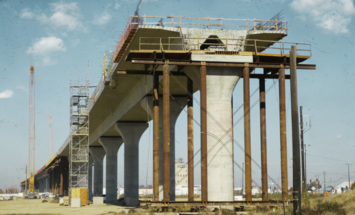
At the June meeting of the Legislature’s Joint Transportation Committee a consultant presented a review of Ultra High-Speed Rail studies that have been done for the I-5 corridor. As is often the case, most of the findings were couched in language crafted to avoid offending anyone and included many caveats about data availability and assumptions that need to be further refined. Despite that, the findings cast doubt on the feasibility of the proposal. Key findings include:
- Speed assumption - The review notes that “…the assumed maximum speeds are higher than any system currently in existence”. And, “average speeds and travel times - which are key inputs to ridership and revenue estimates - are likely on the faster end of the realistic range when compared to existing systems”. In other words, if more realistic speeds are assumed the service would attract fewer riders and generate less revenue.
- Cost increases – “We find the previous cost analysis to be unreasonably low due to escalating capital construction costs, and unreasonable tunnel-related construction costs due to low per-mile costs and potential under-estimation of the extent of tunneling necessary to achieve proposed speed and travel time targets”. And further, “…absent any other changes, the $24 -42 billion capital cost estimates presented in the 2018 study would now be equivalent to $36-63 billion”. That’s a 50% increase in cost before real design work has even begun.
- Unrealistic modal assumptions – The analysis did not assume improvements in the speed and frequency of competing modes. “Because it is highly likely that air and bus fares and service levels, fuel prices and highway travel times will change in the future (but are unchanged in the model), this assumption could result in unrealistic forecasts of future mode shares”. Airline service in the corridor has already improved with faster jets and more service. Over the next twenty years technology will continue to improve the alternatives to rail.
- Flawed survey used to forecast ridership – “…the survey sample was not necessarily fully representative of current corridor travelers and in particular was skewed by a large portion of the sample who were recruited through social media and outreach channels”. A more representative sample would have resulted in lower ridership forecasts. The consultants fail to mention that ridership on the Amtrak Cascades service connecting the same cities peaked in 2011, and ridership on Sound Transit’s commuter rail service between Tacoma, Seattle and Everett is less than half what it was prior to COVID. This suggests the future market for service in the corridor may be less than assumed in prior studies.
- Geographic obstacles – “Significant constraints exist for the 80-90 miles of alignment in urban areas for which current rights-of-way do not seem feasible for high-speed operations and for which tunnels, significant right-of-way acquisitions, and/or alternative corridors should be examined”. In this case “significant constraints” is a euphemism for the homes, highways, rivers, and other geographic obstacles that would need to be removed or crossed. There is no low-cost, low impact alignment for high-speed rail connecting the major cities in the I-5 corridor.
These are not minor points that can be ignored or easily corrected.
Read the rest of this piece at Washington Policy.
Charles Prestrud is director of the Coles Transportation Center. Charles brings more than thirty years of transportation experience to the position, including serving as WSDOT’s planning manager for King and Snohomish Counties, and earlier in his career, as planning manager for a transit agency. His professional work has included leading the preparation of a long-range transit plan, analysis of legislative proposals, development of State Highway HOV policy, crafting Federal and regional grant applications, and lots of inter-agency coordination. He has served on several Transportation Research Board committees as well as National Cooperative Highway Research Program study panels.
Photo: courtesy Washington Policy.












